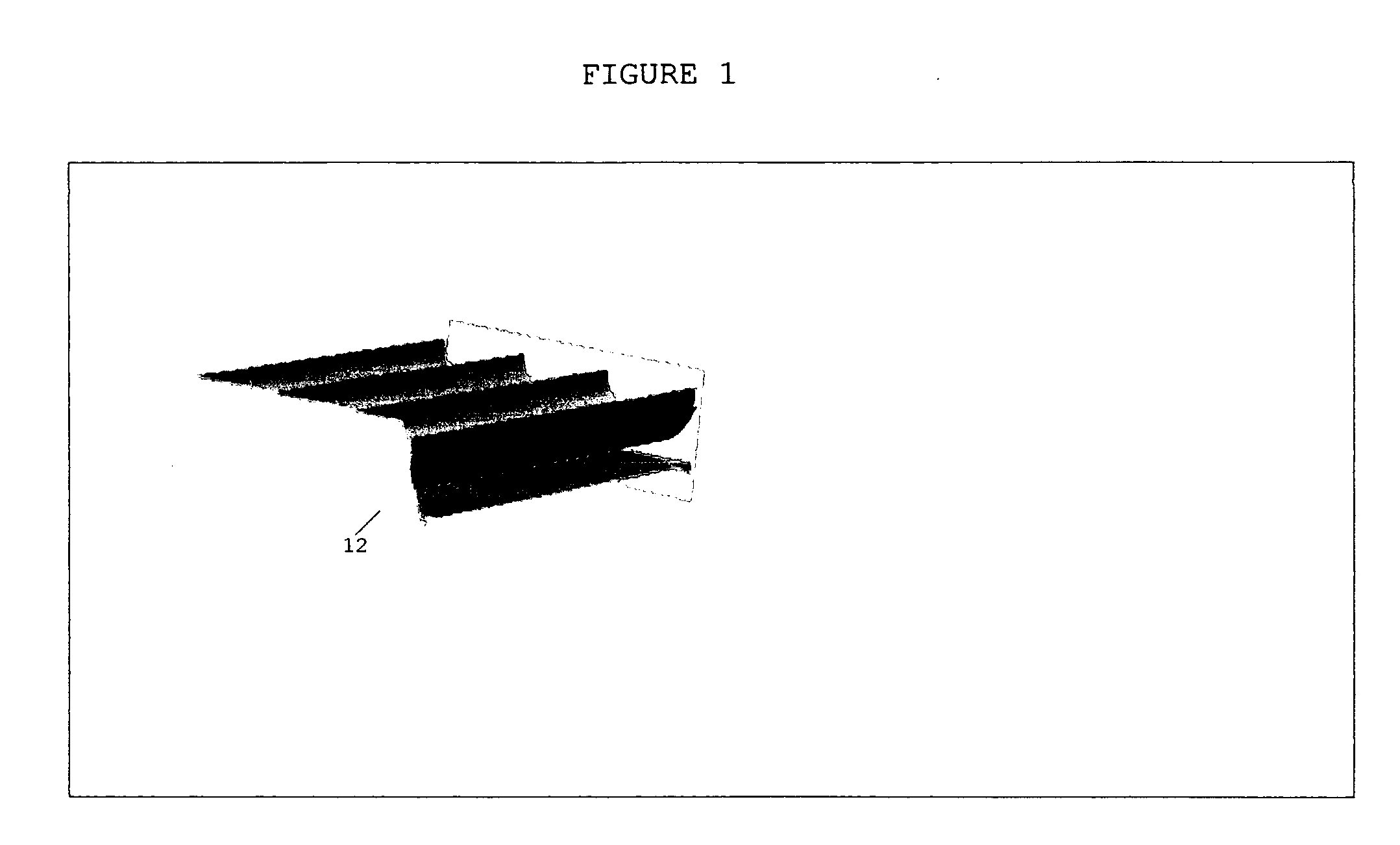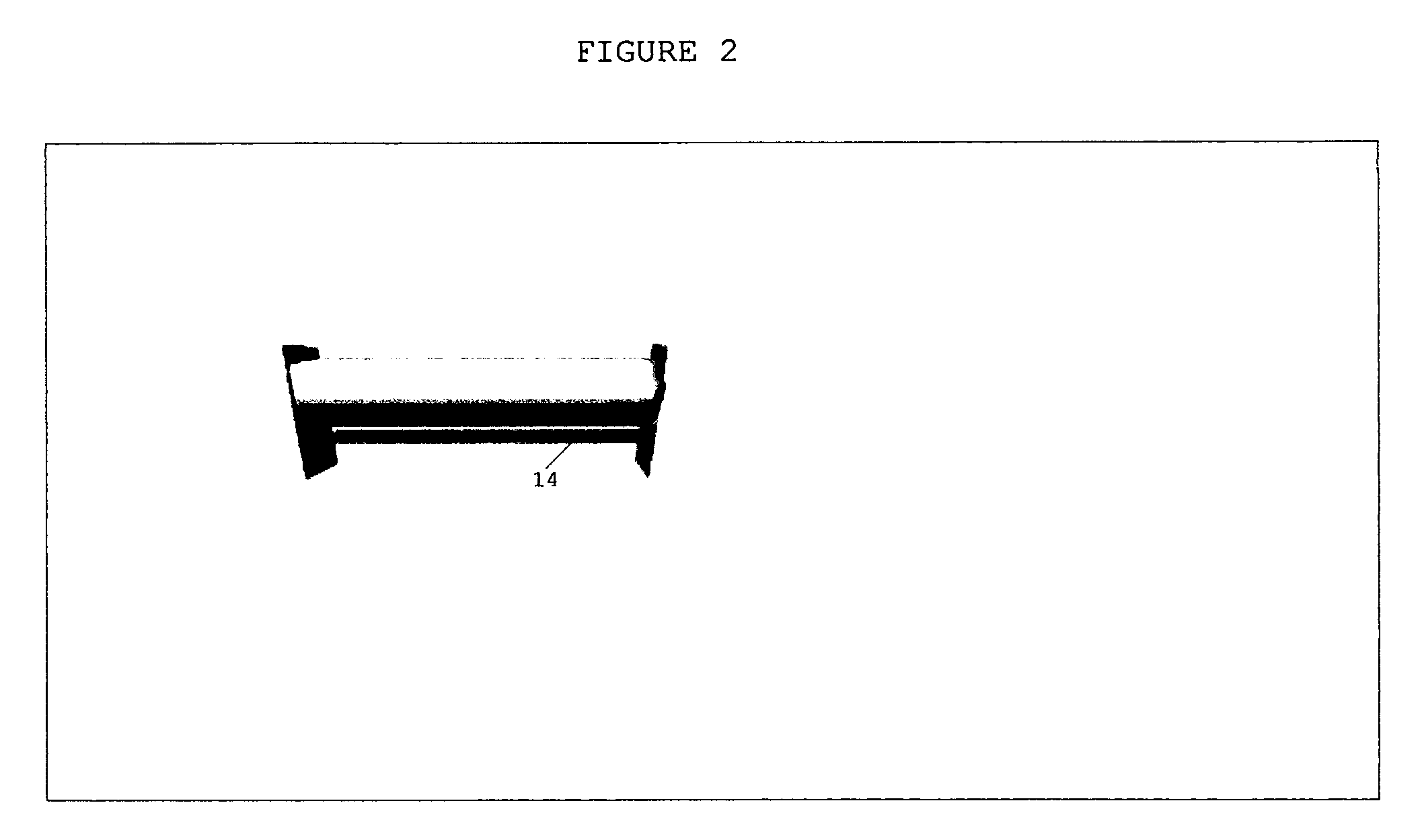Support for utensils and napkin holder
a technology for supporting utensils and napkins, which is applied to tableware, stand/trestles, and hangers, etc., can solve the problems of utensils getting dirty, drink spillage, food falling, etc., and it is unwise to place utensils directly on the tabl
- Summary
- Abstract
- Description
- Claims
- Application Information
AI Technical Summary
Benefits of technology
Problems solved by technology
Method used
Image
Examples
Embodiment Construction
[0029]FIG. 1 is a perspective top view of the utensil holder. This view shows the three utensil sections 10. These individual sections are connected at their ends to the two side walls 12. Utensils are placed inside these sections.
[0030]FIG. 2 is a side view of the individual support device. This view shows the three utensil sections 10 and the napkin holder and how they are raised from the surface. Additionally, the angled side panels can be seen from this view.
[0031]FIG. 3 is a perspective top view of the support for utensils and napkin holder. The napkin holder sections consists of a flat panel 14 connected to the side walls 12 below the utensil sections 10.
[0032] The device will be manufactured in several sizes. The smaller sizes are individual utensil holders, the larger sizes will be used to hold utensils for several settings. The napkin holder will hold a greater amount of napkins in the larger sized units.
[0033] The individual sized utensil holder has ample room to hold ...
PUM
 Login to View More
Login to View More Abstract
Description
Claims
Application Information
 Login to View More
Login to View More - R&D
- Intellectual Property
- Life Sciences
- Materials
- Tech Scout
- Unparalleled Data Quality
- Higher Quality Content
- 60% Fewer Hallucinations
Browse by: Latest US Patents, China's latest patents, Technical Efficacy Thesaurus, Application Domain, Technology Topic, Popular Technical Reports.
© 2025 PatSnap. All rights reserved.Legal|Privacy policy|Modern Slavery Act Transparency Statement|Sitemap|About US| Contact US: help@patsnap.com



